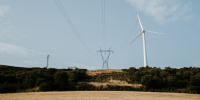
Photo Grahame Jenkins on Unsplash
Harnessing offshore wind for green growth in Vietnam
If enabled by well-designed policy, offshore wind power has the potential to play a key role in Vietnam’s emission reduction and energy availability efforts, Thang Nam Do and Paul Burke write.
Vietnam is exploring ways to achieve its ‘net zero emissions by 2050’ commitment while meeting a growing demand for energy. One source with big potential is offshore wind power (OWP).
In 2021, Vietnam’s OWP sector grew rapidly. At the start of the year, Vietnam had one 99 megawatt (MW) near-shore OWP plant in the southern province of Bạc Liêu. However, over the next 12 months, 20 new OWP projects – with a total capacity of 779 MW – commenced commercial operations.
This growth made Vietnam the third largest market for new OWP capacity installations in 2021, behind only China and the United Kingdom. Yet, relative to its potential, Vietnam’s OWP sector is still in its infancy.
Carried out under The Australian National University’s Zero-Carbon Energy for the Asia-Pacific Grand Challenge project, our new paper provides insights into OWP development in Vietnam.
Based on expert surveys and policy option analysis, the study finds that OWP could be deployed at scale to meet increasing energy demand and contribute to achieving Vietnam’s net zero target.
Vietnam has significant OWP potential – particularly in the south – with 475 gigawatts (GW) of technical potential within 200 kilometres of the coast. This is the largest such potential in Southeast Asia and equal to about six times Vietnam’s current installed power capacity.
Key barriers to realising this potential include incomplete leasing and licensing procedures and limited technical capacity.
Policy uncertainty is another hurdle. Vietnam’s OWP installation take-off in 2021 was closely linked to a rush to beat the end-of October expiry date for eligibility for the former feed-in tariff, a mechanism that had provided price certainty for OWP producers.
However, no new feed-in tariff or incentive instrument has been established, leaving future projects in limbo.
To overcome the barriers, clear and ambitious OWP targets in the upcoming Power Development Plan would help. A predictable feed-in tariff for the coming years, followed by a move to reverse auctions – where multiple energy suppliers are invited to bid for contracts – would also be a practical way forward.
An enabling policy framework including transparent and detailed regulations on marine spatial planning, environmental impact assessments, and task division among agencies will be important. More streamlined leasing and permitting could also improve efficiency and effectiveness.
The industry’s development would also benefit from close cooperation between government and the private sector. For example, the government could take more responsibility for pre-leasing site preparations, while OWP developers could take responsibility for connecting OWP farms to onshore grids.
Better communication of the benefits of OWP could also help in generating political and public support throughout the country.
Strengthening the linkages between marine, climate, and energy policy-making via mechanisms such as the national action plan for net zero emissions, which is being drafted, would create impetus for boosting OWP uptake. Pricing carbon would also incentivise OWP deployment.
OWP can have a higher capacity factor, greater predictability, and involve less land interference than solar photovoltaic technology and onshore wind. It is thus relatively well suited to integration into Vietnam’s electricity systems, particularly as more energy storage enters the system.
Although technology costs for deep-water OWP are currently higher than those for near-shore OWP projects, deep-water OWP typically has fewer negative impacts on the livelihood of local fishers and on other marine economy sectors. It thus merits long-term policy development initiatives rather than leaving the focus on near-shore projects alone.
The time is ripe for a more conducive policy framework that allows Vietnam to more fully harness the opportunities that are available in OWP. If it does so successfully, the country may be able to lead the way for other developing countries in the region and beyond.
The authors’ new open-access [paper](https://doi.org/10.1016/j.marpol.2022.105080 “https://doi.org/10.1016/j.marpol.2022.105080”) provides insights into OWP development in Vietnam.
Updated: 22 November 2024/Responsible Officer: Crawford Engagement/Page Contact: CAP Web Team








